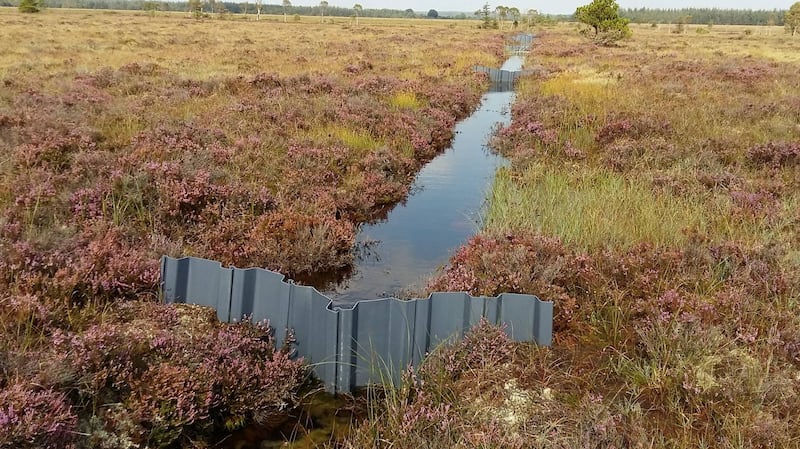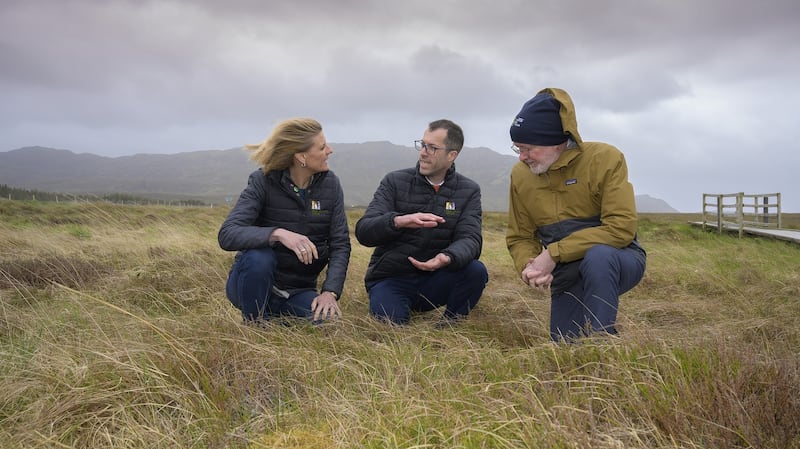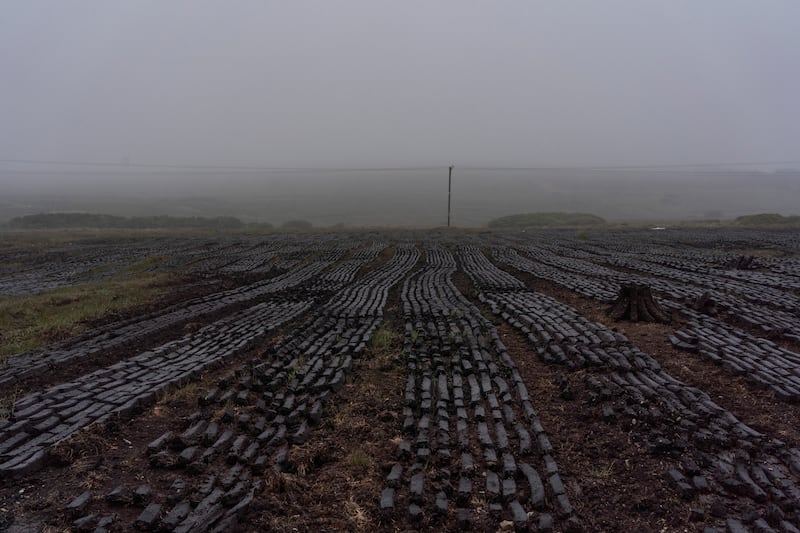Those who are successful in the private investment world are often identified by their diverse portfolios, but having a large bog in the mix would not be considered the norm. The co-founder of private investment company Ion Equity, Joe Devine, however, is a notable exception.
Better known for his involvement in energy, film and telecoms – and even Shelbourne FC – Devine has bought an 1,800-acre bog in North Mayo that is occupying a lot of his strategic thinking these days, but he stresses: “This is not a ROI [return-on-investment] project.”
And this is no ordinary bog – it is part of a vast blanket bog of international significance because of its habitat and its ability to capture carbon, albeit impaired by previous human intervention.
In 2017, while trekking Mayo’s Bangor Trail (a route from Bangor Erris to Newport), Devine noticed a large tract of land south of Bangor Erris near Ballycroy that was for sale. He looked at its potential for forestry but nothing came of it. It came back on the market in 2021 (with a guide price of €900,000). He got a call to discuss whether he had any ideas as to who might be interested in it.
READ MORE
“I called everyone I knew in forestry, carbon trading, tourism, peat production and renewables, and after this due diligence I decided to go ahead and buy it. It has been a journey of discovery and education ever since.”
[ Restoring bogs is more complex than just removing treesOpens in new window ]
The imperatives of nature and the climate soon dominated his thinking – “seeing what we could do with it, and leave to the next generation”. He had acquired a bog of outstanding beauty, but became acutely aware of the need to restore and rewild it, and to raise its water level – known as rewetting – to counter the impacts of drainage carried out in order to extract peat.
The bog was originally drained in the 1980s for industrial extraction. Although only a small proportion of the original peat mass was taken out, the entire acrotelm (peat containing living plants) was removed during initial peat extraction across a significant proportion of the site. Instead of being a rich, biodiverse ecosystem, it was thus damaged – and no longer the great carbon store it should be. It was degraded to varying degrees and also leaking greenhouse gases.

The learning curve included having to carry out numerous baseline studies surveying the entire site, including on ecology and carbon performance. This is about identifying the benefits of restoration and rewetting before remediation works can begin. Devine is also mindful of the bog’s potential to contribute to national and EU nature restoration targets and to help meet the requirements of Ireland’s climate action plan.
“You could over-complicate it. This is about reversing the drainage of a bog, and seeing what benefits are going to emerge,” he says.
Rehabilitating the bog has become the longest-term project he has ever embarked on. “Within five years, we’ll see measurable benefits, but it’s a long-term project. I will have popped my clogs before the real benefits are known.”
[ Ireland will take bog conservation ‘massively seriously’, says McConalogueOpens in new window ]
Devine says he now has much greater understanding of nature loss. Asked whether the corporate world understands the importance of playing its part in countering this decline, he adds: “I’m not sure if people know where to start. It’s a minefield. There’s a lot of jargon.”
The world collectively has to embark on a journey to address biodiversity and species loss, he says, but “Ireland has a bit to go” on this front.

While the bog is a not-for-profit venture, he is speaking to global climate funds which may lead to their getting involved in supporting what is required. “My day job in the past was corporate finance and investment... I’m not an engineer. I don’t know all the answers. There is no point in thinking I can do this on my own.”
For this reason, he is grateful to Bord na Móna, the National Parks & Wildlife Service and Mayo County Council for their support.
Drains are in the process of being blocked to raise water levels and therefore encourage the restoration of wet blanket bog vegetation and associated habitats. “These measures will further improve the quality, resilience and ecological coherence of the wider blanket bog landscape,” he says.

“The proposed restoration and rehabilitation measures are collectively designed for climate action benefits, to accelerate the trajectory of the site towards a naturally functioning blanket bog ecosystem, while eventually becoming a reduced carbon source and ultimately carbon sink in the future,” he adds.
[ Blanket bog conservation project unveiled for vast area from Galway to DonegalOpens in new window ]
Another goal is optimising conditions to ensure “Sphagnum-rich blanket bog vegetation” returns, where possible.
Devine, who is not from Mayo, endeavours to get there as often as he can to check in on work led by Bord na Móna, but also to experience “great hiking country”. In June he brought 18 people on the 42km Bangor Trail, which is one of Ireland’s last true stretches of wilderness through the Nephin Beg hills. Ancient paths for livestock are often the nearest thing to roads in the region. The salmon-rich Tarsaghaunmore and Owenduff rivers that drain much of the area’s vast boglands, are some of western Europe’s last untouched waterways, feeding into the Atlantic. At a certain point on the trail, Devine’s bogland can be seen in the distance, but it is just part of an invaluable landscape of Atlantic blanket bog that he hopes will soon be on a path to full restoration.
- Sign up for push alerts and have the best news, analysis and comment delivered directly to your phone
- Join The Irish Times on WhatsApp and stay up to date
- Listen to our Inside Politics podcast for the best political chat and analysis
















